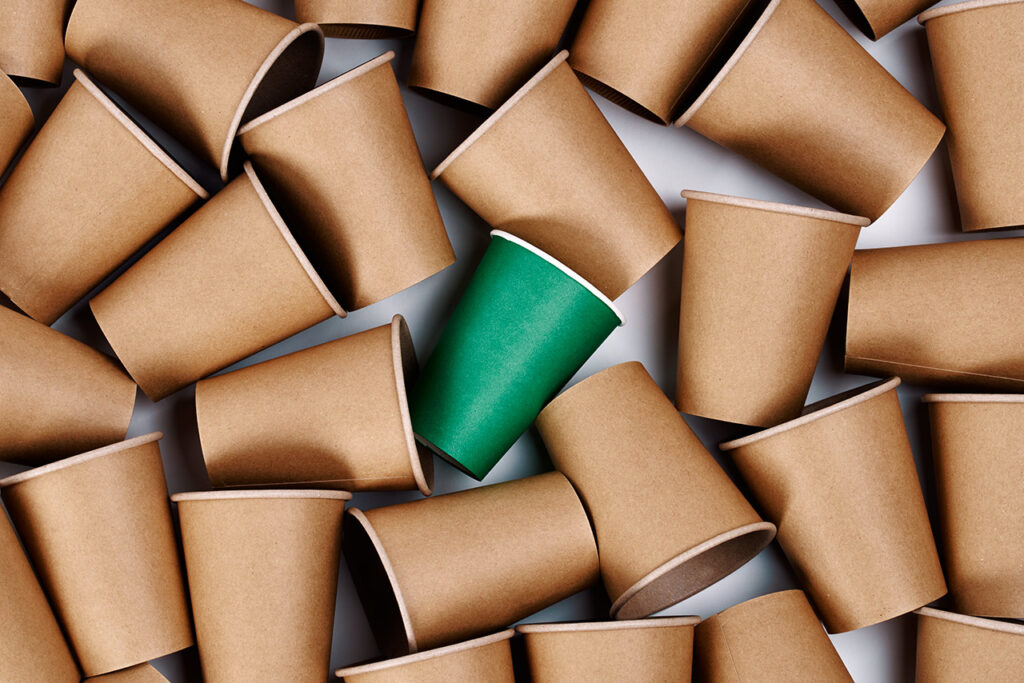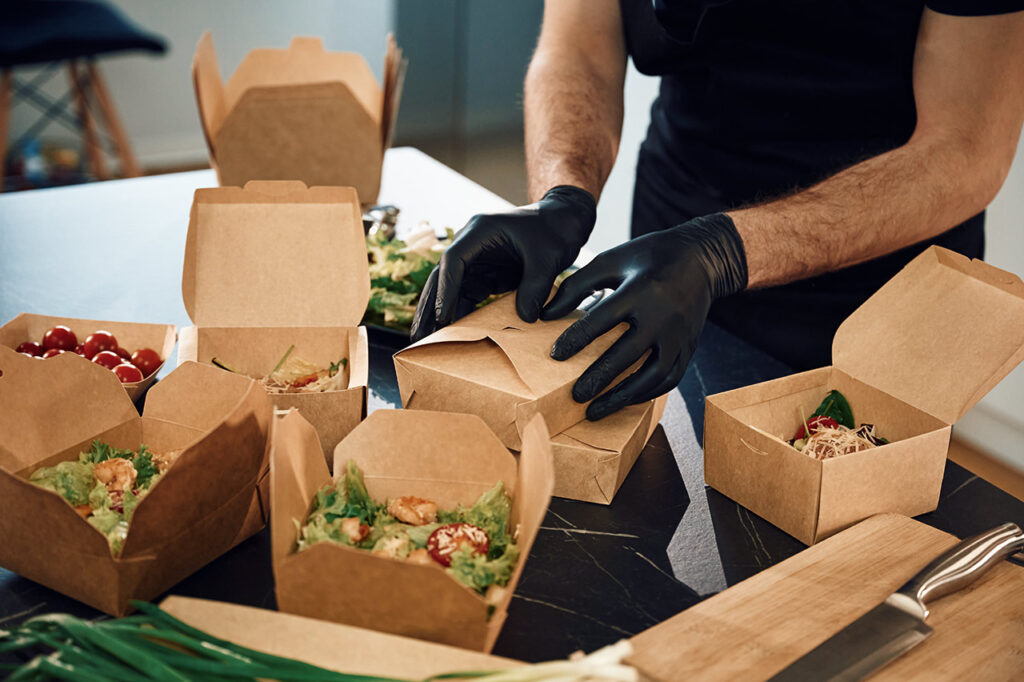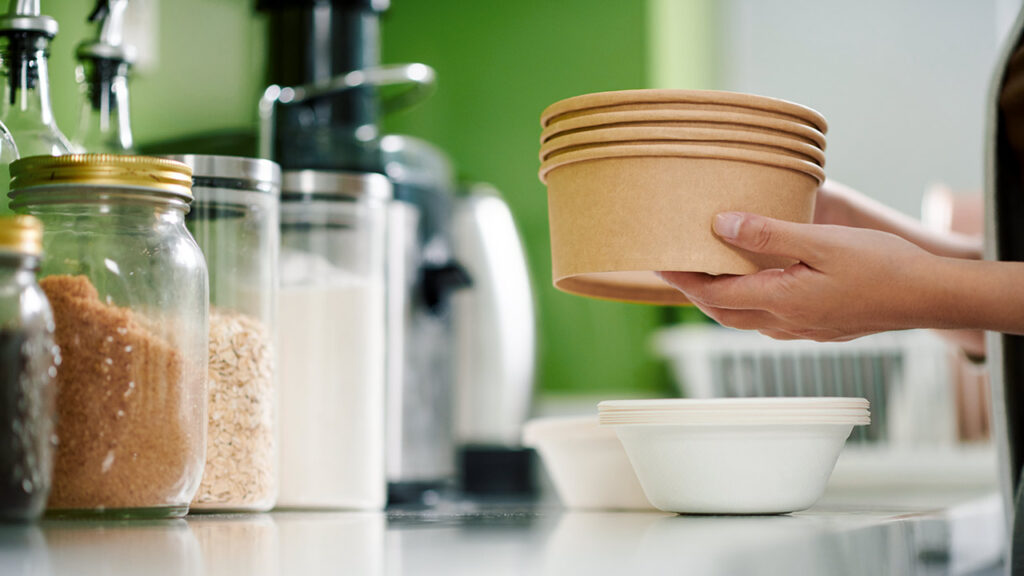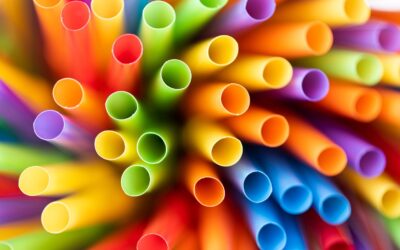Is aqueous coating the answer to our plastic pollution problem?
As Canada cracks down on single-use plastic, the urgency to find sustainable and ban-compliant takeout containers is palpable among many restaurants. A sea of sustainability challenges await food service providers as they grapple with the upcoming ban and its implications.
One solution that is increasingly resonating within the industry is paper takeout containers – an environmentally friendly alternative that demands enhanced durability to withstand the rigours of meal transportation.
This is where aqueous coating steps in. Known for its water resistance and toughness, aqueous coating lends paper containers strength and longevity. But how eco-friendly is this coating? Is it truly a sustainable solution that will help navigate us toward a greener future?
In this article:
- What is aqueous coating?
- Is aqueous coating really plastic-free?
- Is aqueous coating compostable?
- Why use aqueous coating for food packaging?

What is aqueous coating?
Aqueous coating is a clear, water-based protective coating commonly used in packaging and takeout containers. It provides a resilient finish that safeguards paper products, keeping liquids from soaking into the paper fibres. This is essential for food preservation, ensuring that contents remain fresh.
The aqueous solution is mostly water-based, with microscopic polymers that form an even dispersion throughout the coating. It seals off the top layer of the product to form a hard, smooth, and water-resistant surface.
Fast drying and odourless, aqueous coating offers an effective tool that allows paper containers to easily withstand soups, salads, and hot foods without warping or leaking.
Is aqueous coating really plastic-free?
At the heart of the conversation about aqueous coating is their content. Aqueous coating, clear water-based sealants renowned for their environmental friendliness, do contain small measures of polymers within their functional additives. However, this fact prompts an essential question: does this make them plastic?
Polymers, while a common component of plastic products, are diverse and multifaceted substances. Not all polymers lead to what we commonly know as ‘plastic’. The ones incorporated into aqueous coatings distinctively veer away from those found in everyday items like plastic bags or bottles. They are notably free from solvents and volatile organic compounds (VOCs), infamous for their detrimental environmental impacts.
In comparison to conventional linings such as polyethylene (PE) and Polylactic Acid (PLA), aqueous coating have a discernibly lighter footprint. Traditional linings often demand 15-30 grams of PE and PLA per every square meter. Aqueous coating, on the other hand, need a mere 6 grams of polymer per square meter.
This fundamental distinction positions aqueous coating as a greener alternative, leading the way in North American sectors that consider it effectively as being ‘plastic-free’.

Is aqueous coating compostable?
Aqueous coating is commonly labelled as an eco-friendly alternative to plastic, leading many to wonder: can coated containers be composted?
For a substance to be considered compostable, it must break down into natural elements, leaving no toxic residue behind. It must also provide valuable nutrients when sent back to the earth. Essentially, it needs to degrade safely, swiftly, and completely.
The primary element in aqueous coating is water, which is harmless as it is readily absorbed in nature. But the microscopic polymers used in the coating require specific conditions and elongated periods to break down.
This does not mean that the coating is harmful to the environment. Instead, it implies that it will take longer to degrade compared to fully compostable materials. Unlike petrochemical-based coatings, the aqueous variant will decompose in approximately 80 days in a commercial composting facility.
Commercial composting facilities are large-scale systems that operate under carefully controlled conditions. They utilize the aerobic decomposition of organic materials to rapidly transform large amounts of waste into nutrient-rich soil. These facilities can handle materials like bioplastics and aqueous lined products, significantly reducing their environmental impact.
Aqueous coating is also certified home compostable, meaning you can add aqueous lined products, like takeout containers, to the compost pile in your backyard!
Learn more: Compostable vs Biodegradable: What’s the difference?

Why use aqueous coating for food packaging?
Evidently, aqueous coating is a go-to asset for manufacturers of single-use takeout ware. Ranging from enhanced durability to environmental sustainability, these advantages have made aqueous coating a popular choice for food packaging.
Durability
When applied to paper products, aqueous coating forms a robust protective layer that significantly enhances durability. It creates a shield against scratching, warping, and leakage, so consumers can enjoy their meals without worrying about spills.
Moisture Resistance
An integral part of aqueous coating is its ability to repel water and resist moisture. Be it hot soup or a salad with lots of dressing, the aqueous coating keeps the meal intact without the paper becoming soggy or weak.
Safety
Thanks to its water-based components and the absence of volatile organic compounds, aqueous coating is safer than traditional coatings. It does not emit harmful fumes during application and is entirely food-safe, posing no safety risks to workers or consumers. It’s also microwaveable and suitable for hot foods, and won’t leak microplastics into your meal.
Sustainability
Compared to many petrochemical-based alternatives, aqueous coating is significantly less harmful to the environment. The water-based nature and the selection of polymers ensures that the coating will break down, leaving fewer long-term impacts.



